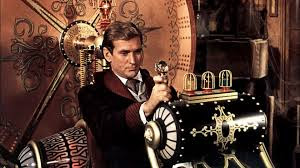My Time and Space Sequence
We were given the task to create a sequence that showed time and space was being manipulated in some way.
We decided to to create a scenario where two people notice each other whilst walking. They Both have a brief flashback of how their relationship used to be like and how their relationship came to an end.
I believe our interpretation of showing the manipulation of time and space was effective as it clearly shown. It was shown by flashback transition where It went into the minds of the characters and what they were thinking in the past.
Storyboard:
An example of a film that manipulates time and space is Harry Potter.
This scene manipulates time and space where Harry and his friend travel back in time. This is shown clearly as everything around them is moving backward in a very fast pace but, they are not being effected.
Another example of a film that manipulates time and space is Time Machine.

They show the manipulation where the actor is in the time machine and he is not being affected while everything else is moving forward in time at a fast pace.










